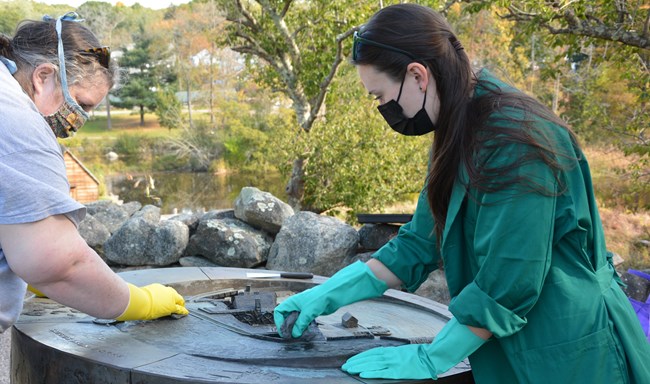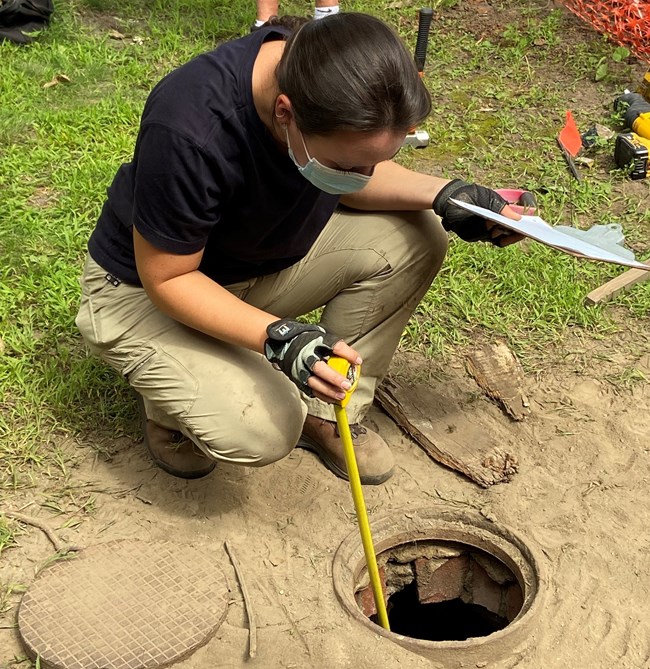Part of a series of articles titled Staff of Saugus Iron Works and Salem Maritime National Historic Sites.
Article
Museum Technician: Lissa Herzing

NPS Photo / Catie Murphy Saraceno
What is your current job title and what are your duties?
I am the Museum Technician for Saugus Iron Works and Salem Maritime national historic sites, a role which requires many hats. One of the hats I wear is that of archeologist!
I work with Chief of Resources, Gavin Gardner, and Curator, Dr. Emily Murphy to preserve, protect, and research the cultural resources and museum collections at both sites.
What is your educational background?
I have a bachelor’s degree in Anthropology and Archaeological Studies from the State University of New York College at Potsdam and am working to finish my master’s degree in Historical Archaeology from the University of Massachusetts Boston. Archeology is the study of the human past reflected through material culture excavated from the earth using scientific methods.
I have participated in several archeological excavations across the Northeast U.S. and even in South Africa, working to document and explore sites from a variety of time periods. Through this work plus my academic training, I have learned many of the skills that prepared me for my position in the National Park Service, and I am still learning every day!
What are your job duties?
Federal legislation mandates that whenever improvement project that will cause ground disturbance is planned at a National Park site, an archeologist is required to monitor the work to look out for any artifacts or features that may be encountered. It is the responsibility of the resource management staff to protect the cultural resources contained within the park sites, and that includes things below the ground surface!
Since I began working at Saugus Iron Works and Salem Maritime national historic sites, I have had a few opportunities to assist with archeological monitoring. Archeological monitoring requires attention to detail, an understanding of local soils and the natural and cultural stratigraphy, familiarity with artifact types that may be present at the site, and much more!

NPS Photo / Elizabeth Thakkar
What do you like most about your job?
One of my favorite things about this work is conducting historical research once something is found. Just this year, during a fence post replacement project at Salem Maritime an early 20th century septic system feature was uncovered, but at first, we had no idea what it was! After we examined the four chamber sub-surface brick constructed feature, we conducted research on both the history of the property and the feature to figure out exactly what it was. We carefully documented the feature, making a to-scale drawing, recording its location in relation to the buildings around it and took many photos. This is just one example of the type of thing we might encounter when performing archeological monitoring.
I love that there is always something new to discover and I love exploring the history of Salem Maritime and Saugus Iron Works each and every day.
Last updated: February 11, 2022
